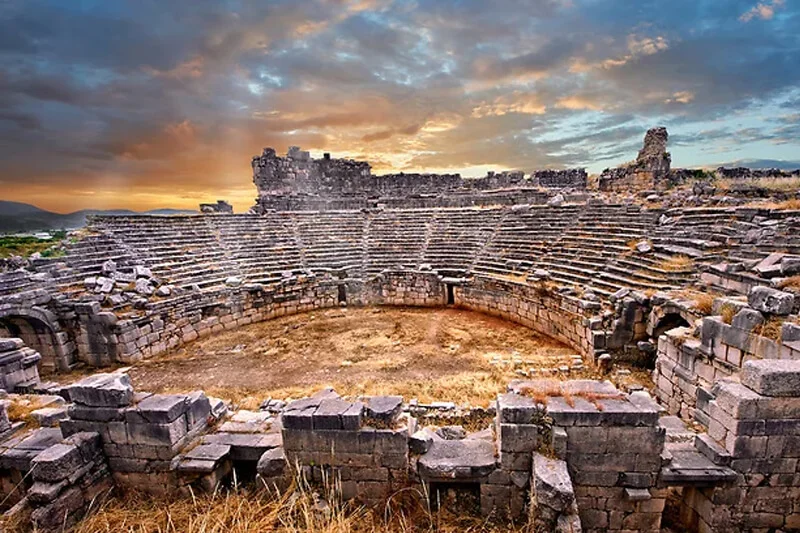Xanthos, also known as Xanthus, was an ancient city in Lycia, located in present-day Turkey. It was an important center of the Lycian civilization and is recognized as a UNESCO World Heritage Site.
Xanthos has a long and rich history that dates back to the Bronze Age. It was the capital of the Lycian League, a federation of Lycian city-states, and played a prominent role in the region. Xanthos was known for its resistance against foreign invasions, particularly against the Persian Empire.
The city of Xanthos was built on a hillside overlooking the Xanthos River. It was fortified with defensive walls, which can still be seen today. The city featured various structures, including temples, public buildings, residential areas, and tombs. The architecture reflects a blend of Lycian, Greek, and Roman influences.
One of the most famous and iconic structures in Xanthos is the Harpy Tomb. It is a monumental tomb believed to have been built for a prominent Lycian ruler. The tomb’s façade is decorated with reliefs depicting winged female figures known as harpies, giving it its name. The Harpy Tomb is considered a masterpiece of Lycian funerary architecture.
Another notable structure in Xanthos is the Nereid Monument. It is a marble tomb believed to have been constructed for a Lycian prince. The monument is adorned with elaborate reliefs depicting mythological scenes, including depictions of the sea nymphs known as Nereids. The Nereid Monument is now displayed at the British Museum in London. Xanthos, along with the nearby Letoon, was designated a UNESCO World Heritage Site in 1988. The site is recognized for its outstanding universal value, representing the unique Lycian civilization and its architectural and cultural contributions.


Comment (0)